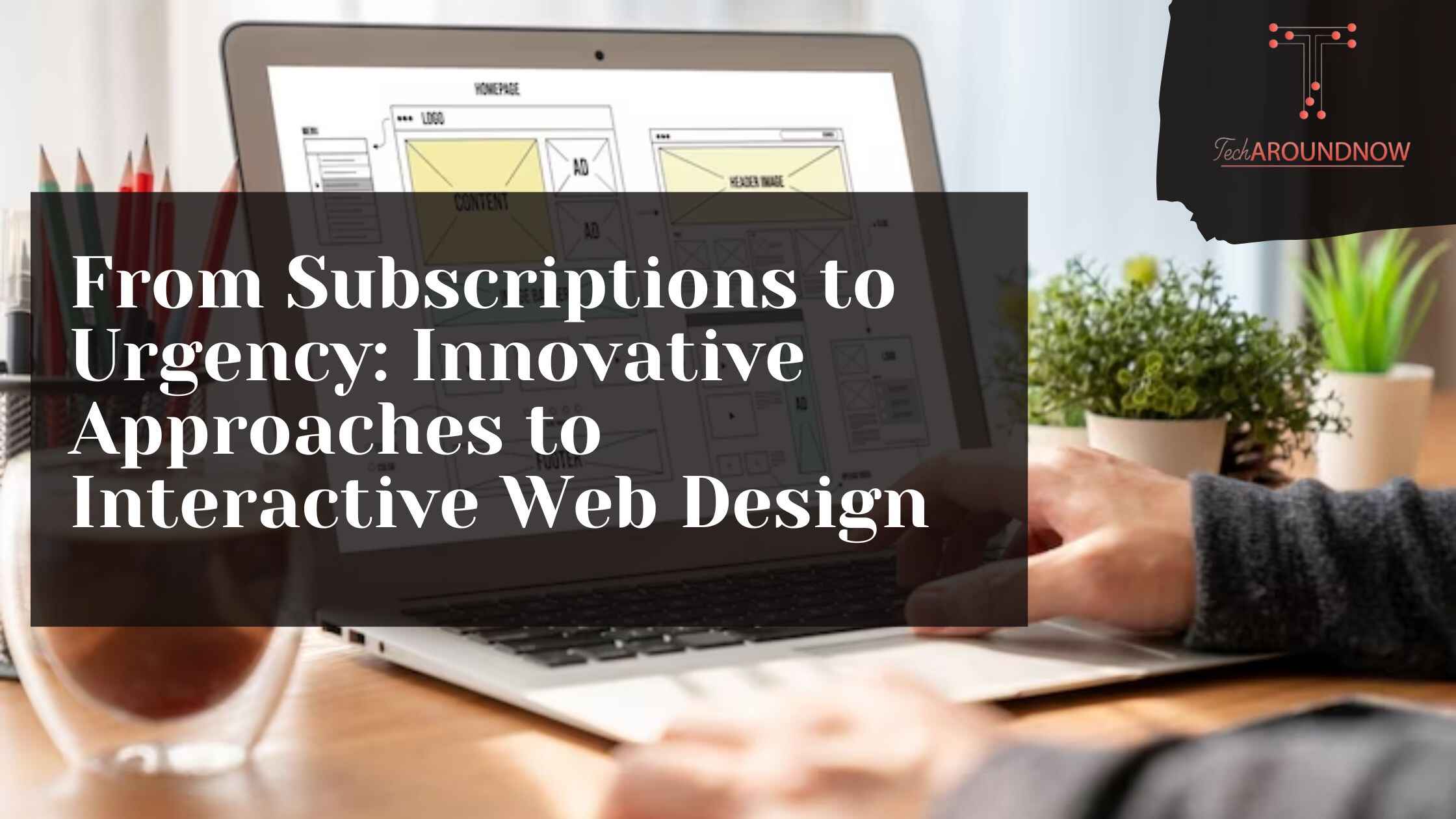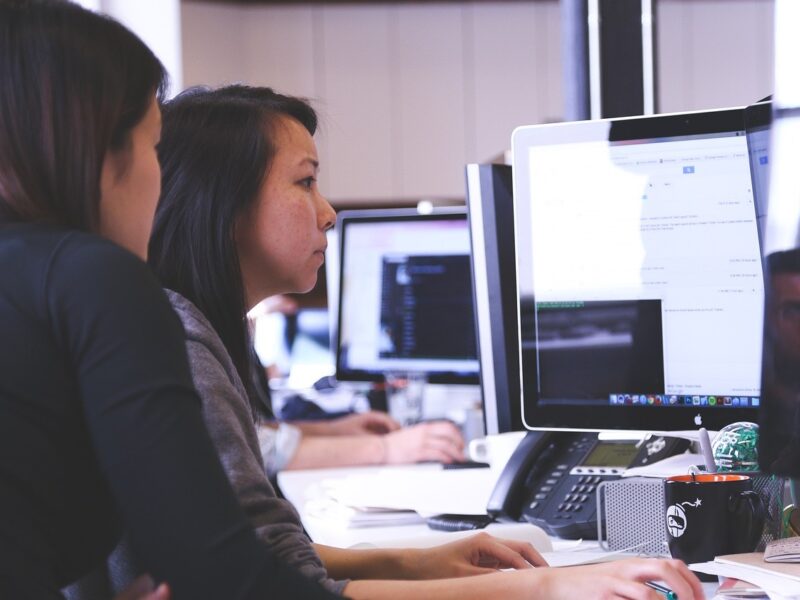In the ever-evolving landscape of the digital realm, the ways we engage users on the web have transformed dramatically. No longer can designers rely solely on aesthetics; the era we’ve entered demands a fusion of strategy, creativity, and user psychology. This piece delves into this intricate topic. As businesses lean into subscription models and harness the power of urgency to drive user actions, understanding the intricacies of modern web design becomes paramount. Dive in as we explore the groundbreaking strategies shaping the future of our online interactions.
The Rise of Subscription Models
Once confined to the realm of magazines and newspapers, subscriptions have permeated various sectors, including web design, marking a significant departure from traditional one-time transaction models.
What are Subscription Models in Web Design?
In the context of web design, subscription models refer to the practice of offering users access to content or features in return for regular, often monthly or yearly, payments. Unlike the conventional approach where users might pay once to access a particular feature or tool, here, they commit to an ongoing payment in exchange for continuous access or updates. Websites might offer premium content, ad-free experiences, or specialized tools to subscribers, differentiating the user experience between free and paying visitors.
Benefits of Implementing Subscription-Based Features
The allure of the subscription model in web design is manifold:
- Steady Revenue Stream: Subscriptions guarantee businesses a predictable and consistent source of income. This can be a boon for financial planning and sustainability.
- Deepened User Engagement: When users commit to a subscription, they’re more likely to engage more deeply and frequently with the website’s content or tools, ensuring that they get their money’s worth.
- Enhanced User Loyalty: With regular interactions, subscribers tend to develop a sense of loyalty towards the platform or brand, leading to longer user retention.
- Opportunity for Continuous Feedback: Regular subscribers often provide valuable feedback, allowing for iterative improvements and ensuring the platform remains attuned to user needs.
- Tiered Offerings: Subscription models offer the flexibility to introduce various tiers, catering to different user needs and budget constraints, thereby widening the potential user base.
In essence, the rise of subscription models is not just a passing trend but a testament to the evolving user expectations and the dynamic nature of web design.
Urgency as a Web Design Strategy
Capturing and sustaining user attention is like catching lightning in a bottle. Amid the myriad techniques employed to achieve this, one stands out for its effectiveness: the incorporation of urgency. This strategy, when artfully executed, can bring users into action, transforming passive browsers into active participants. Here are some foundational principles:
- Scarcity & Limitation: Whether it’s a limited-stock item or a fleeting discount, signaling that an offer is scarce can spur users to act promptly.
- Clear & Concise Calls-to-Action (CTAs): Ambiguity can be the enemy of urgency. A clear CTA, like “Only 5 left!” or “Offer ends in 3 hours”, communicates urgency unambiguously.
- Visual Indicators: Progress bars, countdown widgets for websites, and vibrant color cues can underscore the urgency and draw attention to it.
- Real-time Updates: Showcasing real-time data, such as the number of people viewing a product or spots left in a webinar, can drive home the immediacy of the situation.
- Emotional Engagement: Evoking emotions, like the fear of missing out (FOMO), can be a powerful ally in fostering urgency.
Real-world Applications and Their Impact
The real power of urgency as a design strategy shines through its real-world applications:
- E-commerce Platforms: Think of those ‘Only 2 items left in stock’ prompts. Such tactics often lead to quicker purchasing decisions, reducing cart abandonment rates.
- Booking Websites: Travel and event websites highlighting limited seats or rooms, or showing “5 people are looking at this deal right now”, tap into FOMO, often leading to rapid bookings.
- Email Campaigns: Limited-time offers or flash sales with a clear end time can result in higher click-through and conversion rates.
- Online Courses & Webinars: “Last day to enroll!” or “Only 10 spots left!”
The undeniable impact of these real-world applications underscores urgency’s prowess. However, like all powerful tools, it’s essential to use urgency judiciously. When used ethically and strategically, urgency can be a transformative element in web design, turning moments of hesitation into decisive action.
Emerging Techniques in Interactive Web Design
Two particularly potent strategies, gamification and AI-driven personalization, are setting new standards and expectations for user interaction.
Gamification and User Engagement
Gamification, at its core, involves integrating game-like elements into non-game contexts. In web design, this translates to:
- Reward Systems: Websites are now employing point systems, badges, and leaderboards to incentivize and recognize user activity.
- Progress Tracking: Much like leveling up in a game, users can see their progress or journey on a website, often leading to increased engagement and a desire to ‘complete’ tasks.
- Interactive Challenges: By introducing quizzes, puzzles, or interactive storytelling, sites can keep users engaged for longer durations.
- Feedback Mechanisms: Immediate feedback, be it through animations, sounds, or visual cues, can make the user experience more satisfying and intuitive.
The brilliance of gamification lies in its ability to tap into our innate love for play and achievement. By turning mundane tasks into engaging challenges, websites can boost user involvement, increase dwell time, and foster brand loyalty.
Personalization Through AI and Machine Learning
Enter AI and machine learning, technologies that are reshaping the landscape of web design personalization:
- Custom Content Recommendations: Platforms now use machine learning algorithms to analyze user behavior and preferences, delivering tailor-made content recommendations that resonate more with individual users.
- Adaptive User Interfaces: AI can dynamically adjust website layouts, colors, or even content structures based on the user’s behavior, device type, or other contextual factors.
- Chatbots and Virtual Assistants: Beyond the basic scripted responses, modern chatbots learn from user interactions to provide more precise and personalized answers over time.
These AI-driven strategies take user interaction to a deeply personal level. When a website seems to ‘know’ and ‘understand’ a user’s preferences, the resulting experience is not only more engaging but also feels tailored, creating a sense of connection and loyalty.
Future Outlook: What’s Next in Interactive Web Design
As we stand on the precipice of technological advancements, the horizon of interactive web design offers both unparalleled promise and tantalizing mystery. The trends we’ve witnessed, from the rise of gamification to the precision of AI-driven personalization, are mere precursors to a digital future teeming with innovation.
We anticipate a surge in immersive experiences, perhaps powered by augmented and virtual reality, further blurring the lines between the physical and digital realms. Quantum computing might take user experience optimization to previously unimaginable heights, while nascent technologies could introduce entirely new dimensions to user interaction.
However, with these advancements will also come a renewed responsibility. Ethical considerations, data privacy, and inclusive design will play pivotal roles in shaping this future landscape. Web designers and developers will need to strike a balance between creating awe-inspiring experiences and ensuring they are accessible, ethical, and beneficial to all.
TechAroundNow is a blogging website that centers on the latest technology and marketing innovations and trends, aimed at assisting individuals and businesses across the globe since 2021. TechAroundNow continues to serve as a reliable source for staying up-to-date with the ever-evolving landscape of technology and marketing, ultimately fostering growth and success in the digital era.


